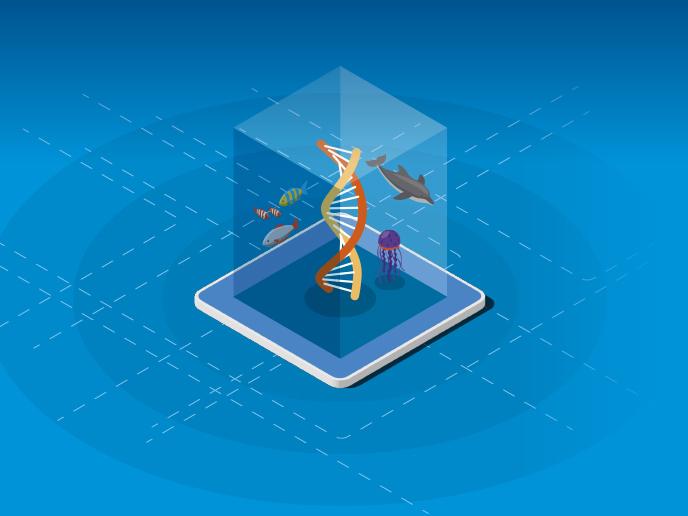II - Exploring our oceans in five dimensions
The ocean is vast, and much of it remains unexplored. BIOcean5D is on a mission to investigate marine biodiversity, from tiny viruses to the largest mammals.
Colomban de Vargas, BIOcean5D scientific director
Marine biodiversity and ecosystems undergo constant change and are doing so at a faster pace than their terrestrial counterparts. The EU-funded BIOcean5D project aims to revolutionise ocean exploration and provide a holistic understanding of its ecosystems. “We want to explore, set standards and attempt a planetary-scale sampling of biodiversity – from viruses to mammals,” says the project’s scientific director Colomban de Vargas, research director at the French National Centre for Scientific Research. “This will help unveil the drivers of biodiversity changes, stability and resilience in marine ecosystem health.” Their ultimate objective is to lay the groundwork for a comprehensive ‘5D’ map of the world’s oceans. The number refers to three unique dimensions across space, plus time and human impact. This data will provide critical insights for new theories and accurate ocean modelling, while identifying vulnerable marine habitats and potential conservation areas. At the heart of the project is a consortium of 31 partners from 11 countries. The BIOcean5D team comprises specialists from different disciplines, including molecular cell biology, marine biology, sequencing, theoretical ecology, econometrics and social sciences. This collaborative approach helps the study of marine life from many different angles and timescales. “One of the key components of BIOcean5D is time,” adds de Vargas. “We go back in time using sediment cores that allow us to look at how marine biodiversity has changed over the last 100 years.” The initiative is also teaming up with the TREC expedition, which spans 21 European coastal countries and 45 marine stations and institutes, to evaluate the effects of human activity and climate change on ocean health. To achieve this, it is using a variety of technologies both in and away from the field, including remote sensing, genetic sequencing and a range of models and protocols. Exploring across a critical range of dimensions, BIOcean5D hopes to gather sufficient comprehensive information on marine ecosystem behaviour to empower future ocean models and inform policy decisions.
Keywords
blue carbon, ocean-climate-biodiversity nexus, climate mitigation and adaptation, natural carbon sequestration, ecosystem services, marine biodiversity, ecosystem functioning, functional ecology, maritime spatial planning, ecosystem-based approach



